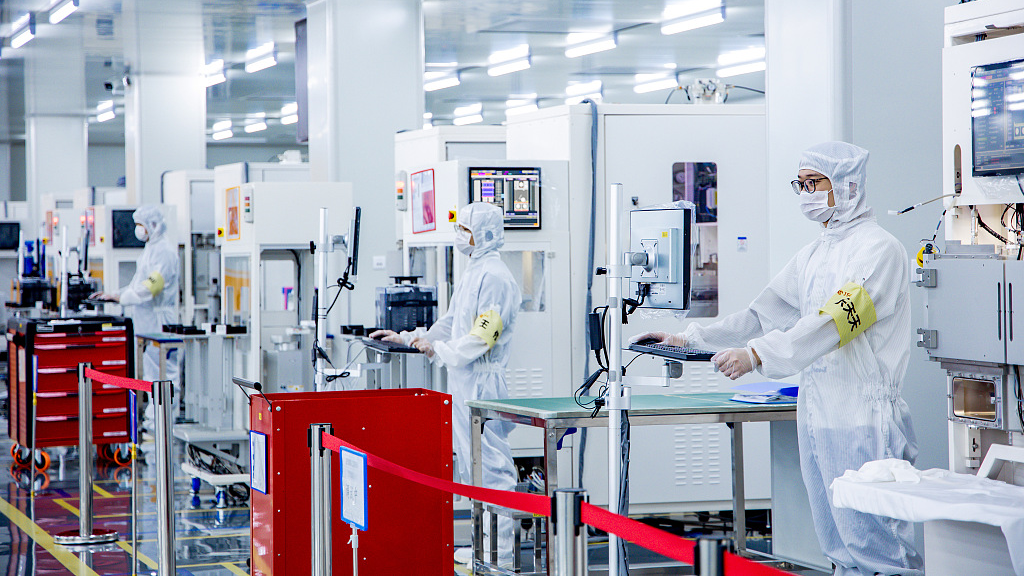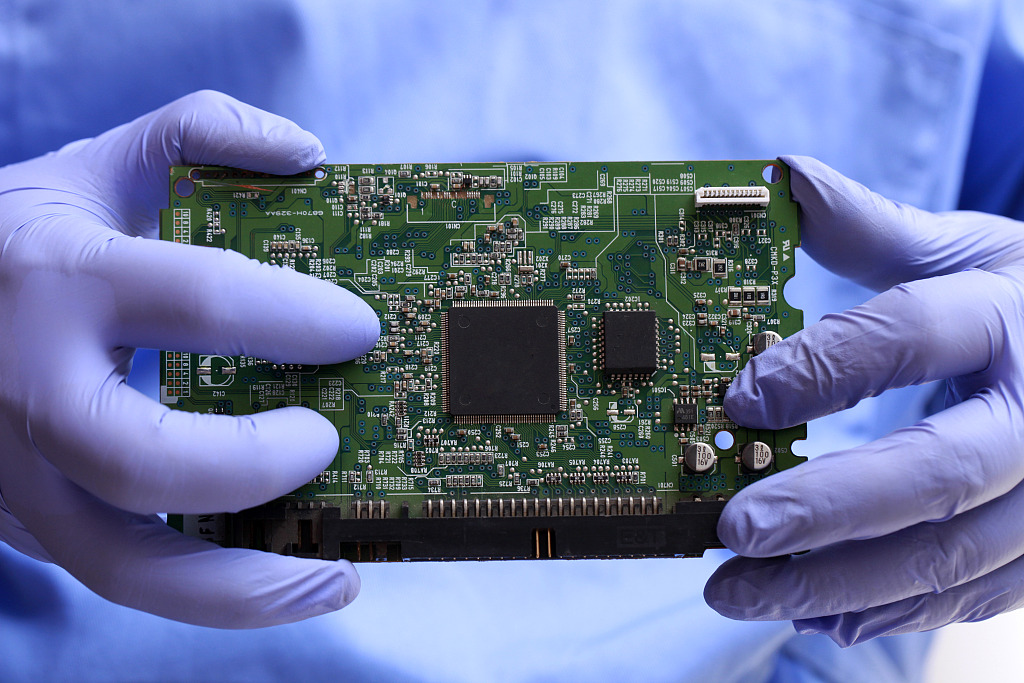
Staff members work at the workshop of semiconductor company Zhejiang Jingsheng Mechanical and Electrical Co., Ltd. in Shaoxing, east China's Zhejiang Province, February 9, 2023. /CFP
Staff members work at the workshop of semiconductor company Zhejiang Jingsheng Mechanical and Electrical Co., Ltd. in Shaoxing, east China's Zhejiang Province, February 9, 2023. /CFP
Editor's note: Andy Mok is a research fellow at the Center for China and Globalization. The article reflects the author's opinions and not necessarily the views of CGTN.
China has marked a significant milestone for its investment in research and development (R&D). It has also presented a bold vision for China's future, with a focus on scientific and technological innovation.
In the past five years, Chinese President Xi Jinping promoted R&D for China's future growth, saying that innovation is the primary driving force for development, and we must put innovation at the center of the national development strategy. He reiterated that China must strive for technological self-reliance, stating that the country should accelerate the transformation of scientific and technological achievements into productivity. This was reflected in increased government investment in R&D, as well as efforts to increase efficiency of the country's R&D system.
Along this clarion call, China has made significant and growing investments in R&D. In 2020, the government invested $441.3 billion, which accounted for 2.4 percent of the GDP, in R&D, which saw a growth of 14.2 percent year on year, according to the National Bureau of Statistics. This made China the second-largest spender on R&D in the world behind the United States. Moreover, according to the State of U.S. Science and Engineering 2022 published by the National Science Foundation, the United States at 27 percent and China at 22 percent account for almost half of global spending on R&D with Japan at 7 percent, Germany at 6 percent and South Korea at 4 percent.
And this investment has paid off. In 2022, China moved up one place to the 11th on the World Intellectual Property Organization's Global Innovation Index. According to a report by the Center for Strategic and International Studies (CSIS), "How China's Human Capital Impacts Its National Competitiveness," China also sourced the most peer-reviewed papers and Chinese research ranked as high as or higher than U.S. work in the top 1 percent of scientific studies in 2019.
But the challenges facing China in this area have also risen during this period and it's useful to assess whether the scale, structure and efficiency of investments in this area can propel China to ultimate success.
Despite significant increases in R&D spending, some experts argue that China's investment is not sufficient to compete in key areas of technology such as semiconductors. Also, while investment in R&D has increased, some question as to whether the current structure of investment is effective in directing towards projects with the greatest potential for impact or are being spread too thinly across a wide range of initiatives. There's also concern that R&D funding is not being used effectively, with too many resources consumed by bureaucratic inefficiencies.

A worker holds a printed circuit board in front of the camera in Beijing, China, February 26, 2023. /CFP
A worker holds a printed circuit board in front of the camera in Beijing, China, February 26, 2023. /CFP
But perhaps the most important issue is whether China is identifying, developing and attracting the talent necessary for achieving high levels of technological self-reliance.
This also was recognized through the articulation of a comprehensive strategy for developing human capital that begins with childhood development and primary education along with a special focus on reducing the urban-rural divide.
With regard to university education, between 2012 and 2021, China's Ministry of Education increased spending on higher education from $24 billion to $47 billion. According to the CSIS, by 2025, Chinese universities are projected to produce more than 77,000 STEM PhD graduates per year, more than double the 2010 level of about 34,000 STEM PhD graduates. In comparison, the United States is projected to graduate only approximately 40,000 STEM PhD students in 2025, a figure that includes over 16,000 international students.
So, while questions remain regarding the scale, structure and efficiency of China's investment in R&D especially in light of a more complex and challenging international environment, the progress made so far has shown tremendous success.
Looking ahead, cultivating human capital and ensuring that capabilities are fully developed and deployed will answer many of these questions. The more quickly China can develop its vast reservoir of talents and attract the best and brightest from around the world, the faster the country will realize the dream of its R&D revolution.
(If you want to contribute and have specific expertise, please contact us at opinions@cgtn.com. Follow @thouse_opinions on Twitter to discover the latest commentaries on CGTN Opinion Section.)